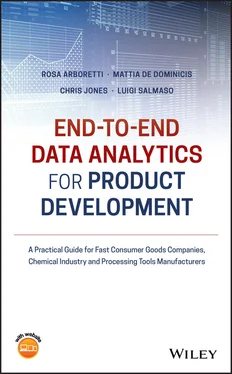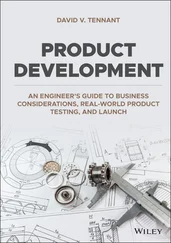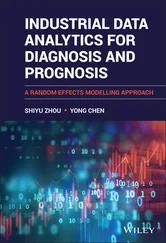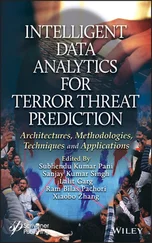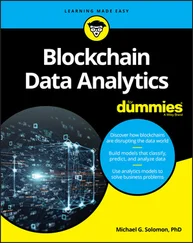The fast‐moving consumer goods (FMCG) industry includes a variety of sectors, from household products to food and beverages to cosmetics and over‐the‐counter (OTC). Despite products being very different in terms of their intended use, benefits, and the way they are regulated, there is a common approach to the method of developing them and identifying the solution for consumers. The process of innovation is similar: starting from the consumer understanding, identifying the insights that are most relevant, and then proceeding to develop an idea. A solution can solve a problem initially at the conceptual level, then moving across to an actual prototype, and then finally to new product development (NPD). No matter the segment, the appropriate use of data presents a value‐adding opportunity to NPD.
There is a great focus in the industry around using big data derived from multiple sources, which are easily accessible via the internet. Today, information derived from many global applications is increasingly measuring different aspects of our lives. However, the focus is now to gain business value from such data. Surprisingly, the use of data for product development in most cases is not robustly established; a clear connection between the experts in statistics/data analytics and the product developers within the main FMCG companies needs to be established.
The focus is to develop better products for consumers by investing the right features and to support faster developments to ultimately limit the number of experiments. So, the scope of this book is to demonstrate how actual statistics, data analytics and design of experiment (DoE) can be widely used to gain vital advantages with respect to speed of execution and lean formulation capacity. The intention is to start from feasibility screening, formulation, and packaging development, sensory tests, etc. introducing relevant techniques for data analytics and guidelines for data interpretation. Process development and product validation can also be optimized through data understanding, analysis and validation.
Throughout the book, there is an intentional balance between the discussion of real case studies and topic explanations made as clear and intuitive as possible. Details on statistical and analytical tools are presented in sections denoted as Stat Tools. Each case study includes a guide to apply the proposed techniques with Minitab, a widely used general‐purpose statistical software (Cintas, P. G., et al., 2012). Some examples with JMP software are also developed as online supplementary material.
This book is an exciting collaboration between expert Statisticians from the University of Padova and innovators/product developers from Reckitt Benckiser (RB) over more than 15 years. The passion and the involvement of multiple people within RB and the University of Padova in various projects have allowed for the development of the examples discussed in this book. A big thanks goes to the leading management group and all people from RB who contributed directly or indirectly in giving inspiration to write this book.
Dr. Chris Housmekerides SVP R&D RB Head of Innovations & Operations, Hygiene Home
About the Companion Website
This book is accompanied by a companion website:
www.wiley.com/go/salmaso/data-analytics-for-pd 
The website includes:
Case studies
Different projects with JMP software
Scan this QR code to visit the companion website.

1 Basic Statistical Background
1.1 Introduction
Statistics and data analytics play a central role in improving processes and systems and in decision‐making for strategic planning and manufacturing (Roberts, H. V., 1987). During experimental research, statistical tools can allow the experimenter to better organize observations, to specify working hypotheses and possible alternative hypotheses, to collect data efficiently, and to analyze the results and come to some conclusions about the hypotheses made.
This is an introductory chapter where readers can review several basic statistical concepts before moving on to the next chapters. Sixteen sections titled Stat Tools will introduce some key terms and procedures that will be further elaborated and referred to throughout the text.
Specifically, this chapter deals with the following:
| Topics |
Stat tools |
| Statistical variables and types of data |
1.1 |
| Statistical Units, populations, samples |
1.2 |
| Introduction to descriptive and inferential analyses |
1.3, 1.12, 1.13 |
| Data distributions |
1.4, 1.5 |
| Mean values |
1.6, 1.7 |
| Measures of variability |
1.8, 1.9, 1.10 |
| Boxplots |
1.11 |
| Introduction to confidence intervals |
1.14 |
| Introduction to hypothesis testing procedures, including the p ‐value approach |
1.15, 1.16 |
Learning Objectives and Outcomes
Upon completion of the review of these basic statistical concepts, you should be able to do the following:
Recognize and distinguish between different types of variables.
Distinguish between a population and a sample and know the meaning of random sampling.
Detect the shape of data distributions.
Calculate and interpret descriptive measures (means, measures of variability).
Understand the basic concept and interpretation of a confidence interval.
Understand the general idea of hypothesis testing.
Understand the p‐value approach to hypothesis testing.
Stat Tool 1.1 Statistical Variables and Types of Data 
In statistical studies, several characteristics are observed or measured to obtain information on a phenomenon of interest. The observed or measured characteristics are called statistical variables . Statistical variables differ according to the type of values they store.
Qualitative or categorical variables can assume values that are qualitative categories and can be either ordinal or nominal.
Quantitative or numeric variables can assume numeric values and can be discrete or continuous. Discrete data (or count data) are numerical values only measurable as integers. Continuous data are numeric values (typically instrumental measures) that can be meaningfully subdivided into fractions.

Example 1.1. For a new shaving oil, it is of interest to compare fragrance A and fragrance B to investigate which is preferred. A sample of female respondents is presented with the two fragrances and asked their age and to answer the following question: How suitable or unsuitable is the fragrance to a shaving aid? Each was asked to assign an integer score from 0 (very unsuitable) to 10 (very suitable). Respondents also expressed their purchase intentions for selecting one of the following categories: Probably would not buy it, Neither, Probably would buy it.The variable “Fragrance” is a nominal categorical variable, assuming two different categories: A and B. The variable “Appropriateness” is a discrete quantitative variable assuming values from 0 to 10. “Age” of the respondents is a continuous quantitative variable, and “purchase intent” is an ordinal categorical variable assuming three different ordered categories.
Читать дальше
